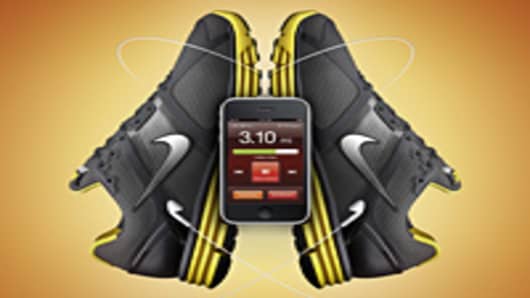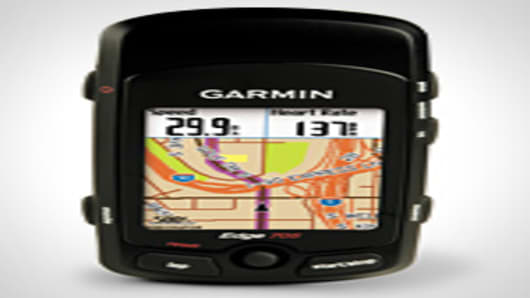In an age when people obsessively track and share the most minute details of their personal lives, more individuals are doing the same thing when it comes to their health and fitness information.
And as young consumers—and doctors—increasingly rely on technology, recording and monitoring personal health data could become as common as updating your Facebook page.
“Our consumer is younger,” says Derek Kent, a Nike spokesman. “If you think about their world, it’s a digital world and they’re always looking for ways to leverage technology to help them.”
Experts say more people are monitoring their health as the pressure mounts for individuals to be more accountable for their well being. But the true value will come when the information they collect can easily be shared with health care providers.
There’s An App For That
The tools available for monitoring health and fitness data are wide ranging and easier to use than ever.
One of the more popular health community sites is MedHelp, which attracts more than 10 million unique visitors each month, according to CEO John de Souza. Members can post questions to doctors from hospitals such as Johns Hopkins and Massachusetts General, and the site offers more than 60 personal health applications for tracking a range of conditions, from cholesterol to multiple sclerosis symptoms.
Additionally, there are a slew of Apple iPhone apps that let you monitor chronic conditions, such as diabetes or asthma, as well as tools that simply help you count calories or measure your walking distance.
And gear from companies like Nikeand Garmin help runners and cyclists measure their performance and share it with members of their respective online communities.
“It used to be that if you wanted to track your running with a GPS you had to carry around something you never would have carried before,” says Elizabeth Boehm, principal analyst at Forrester Research. “Now it’s embedded in your iPhone, you can put the chip in your shoe from Nike and be on your way without having to buy or carry a whole bunch of new equipment.”
Along with the tools becoming easier to use, Boehm notes that there’s more outside pressure for people to live healthier lifestyles.
“As part of that push there’s increasing education about the fact that you need to keep track of things in order to become healthier,” she says. “That push is coming from employers, which are incenting their employees to lose weight or drop their cholesterol. It’s coming in part from the health care reform debate, which if nothing else, has produced a lot of stories in the news about how much health care costs and how much people need to take care of themselves.”
Coordination Key
The need to satisfy external demands is where the market is headed. Garmin, known for its GPS navigation devices, also makes GPS-centric training products for runners and cyclists. Tracy Olivier, design engineering manager at Garmin’s fitness division, says the future lies with helping consumers coordinate their personal health information with third parties.
“We believe there’s going to be a big initiative in the health and wellness space for providing proof of activity data to insurance companies, or to physicians for medical records,” she says.
The advancement of electronic medical records is a major component of healthcare reform. Syncing personal health records with EMRs is what de Souza calls the “holy grail.”
“You need to connect the dots between doctor visits,” he says. “How do you provide information to your doctor as to what’s happened between those visits in an efficient manner?”
But Boehm cautions that coordinating personal health data with your physician’s records won’t be solved by technology alone.
“Right now your physician has all of six minutes to see 30 patients a day and is not getting paid to review your data,” she says. “The ability to connect with the physician ties in with reimbursement, it ties in with business models around the way health care is delivered, it ties into a lot of complicating factors beyond the technology.”
Strong Potential, Tough Sell
Given that this is new territory with a lot of room for improvement, business opportunities abound. Boehm says although the market for fitness monitoring tools is guided by consumers who are already motivated to keep track of their health—runners, cyclists, hikers, and the like—tracking chronic conditions is another story.
“If you’re talking about somebody measuring their diabetes or heart disease or getting more into the hardcore health issues, that tends to grow more slowly,” she says. “That’s partly because consumers in denial or they can’t coordinate well with physicians or health counselors in order for these things to really make a difference. That area has a lot of potential but it’s harder to penetrate.”
Companies like Intel and Philips have made big investments in health care technology, including tools to connect individuals with physicians. But she believes the market for end user applications will likely remain heavily fragmented.
“The things that motivate different consumers are going to be different,” she says. “There’s plenty of room for lots of players here. I expect will see lots and lots of little players and then ultimately some consolidation down the road.”



